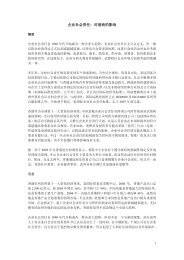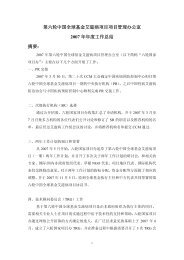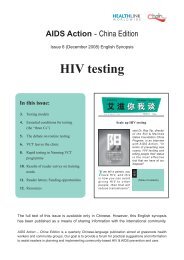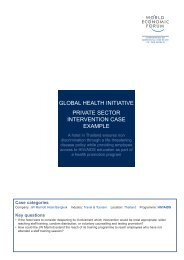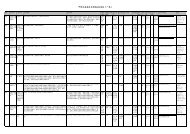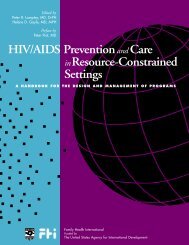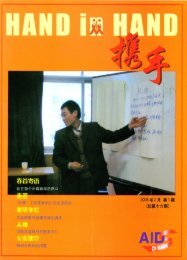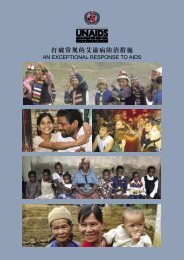The Training of Trainers Manual - UNFPA
The Training of Trainers Manual - UNFPA
The Training of Trainers Manual - UNFPA
Create successful ePaper yourself
Turn your PDF publications into a flip-book with our unique Google optimized e-Paper software.
Process<br />
Introduce this exercise to the group with the following question: ‘What is the<br />
chance that a particular man or woman will fall in love with you’ You may let<br />
participants come up with some answers. Continue with the following explanation:<br />
‘Now most <strong>of</strong> us know that it is not just a matter <strong>of</strong> coincidence or being decent<br />
looking. <strong>The</strong>re are many other factors, some <strong>of</strong> which will work in your favour and<br />
some <strong>of</strong> which will go against you. For example, does the object <strong>of</strong> your desire<br />
already have a partner, do your interests match, are you in the same school or<br />
workplace and so are likely to meet <strong>of</strong>ten, do you have common friends who will<br />
act as your messengers Depending on how you answer these questions, there will<br />
be a higher or a lower chance that you will get what you want. <strong>The</strong> same goes for<br />
drug abuse: there are a number <strong>of</strong> factors in one’s life that can cause one to start<br />
using drugs; these are called “risk factors”. At the same time, there are some other<br />
factors that prevent one from doing so and these are called “protective factors”.’<br />
Next, ask participants to name as many risk factors as they can think <strong>of</strong> that<br />
could cause a young person to start abusing drugs. Emphasize that such risk<br />
factors are different from overall reasons why young people use drugs initially,<br />
such as curiosity.<br />
Record the answers on the flip chart. If any <strong>of</strong> the factors listed on the<br />
facilitators’ resource are not mentioned, bring these up yourself. Ask if<br />
everybody can agree with this list. Next, ask the group to brainstorm<br />
on the protective factors and record the answers on the flip chart.<br />
Next, explain that both kinds <strong>of</strong> factors, risk and protective factors, can be<br />
further divided into two. <strong>The</strong>y can be either personal or environmental.<br />
Personal factors are those that have to do with the individual, and<br />
environmental factors are those that have to do with the social, familial, and<br />
physical environment in which a person lives. Ask a volunteer to indicate<br />
which factors in the first list are personal and which are environmental.<br />
Follow the same procedure for the list <strong>of</strong> protective factors.<br />
Closure<br />
Emphasize that these factors do not cover all the possible things that contribute<br />
to drug use by young people. However, if the risk factors in an individual’s life<br />
outweigh the protective factors, it is more likely that she or he will start abusing<br />
drugs. When working with young people who are at risk for substance abuse, it<br />
is most important to look at both risk and protective factors and to try not only to<br />
reduce the risk factors but also to reinforce the protective factors.<br />
94 <strong>Training</strong> <strong>of</strong> <strong>Trainers</strong> <strong>Manual</strong>




